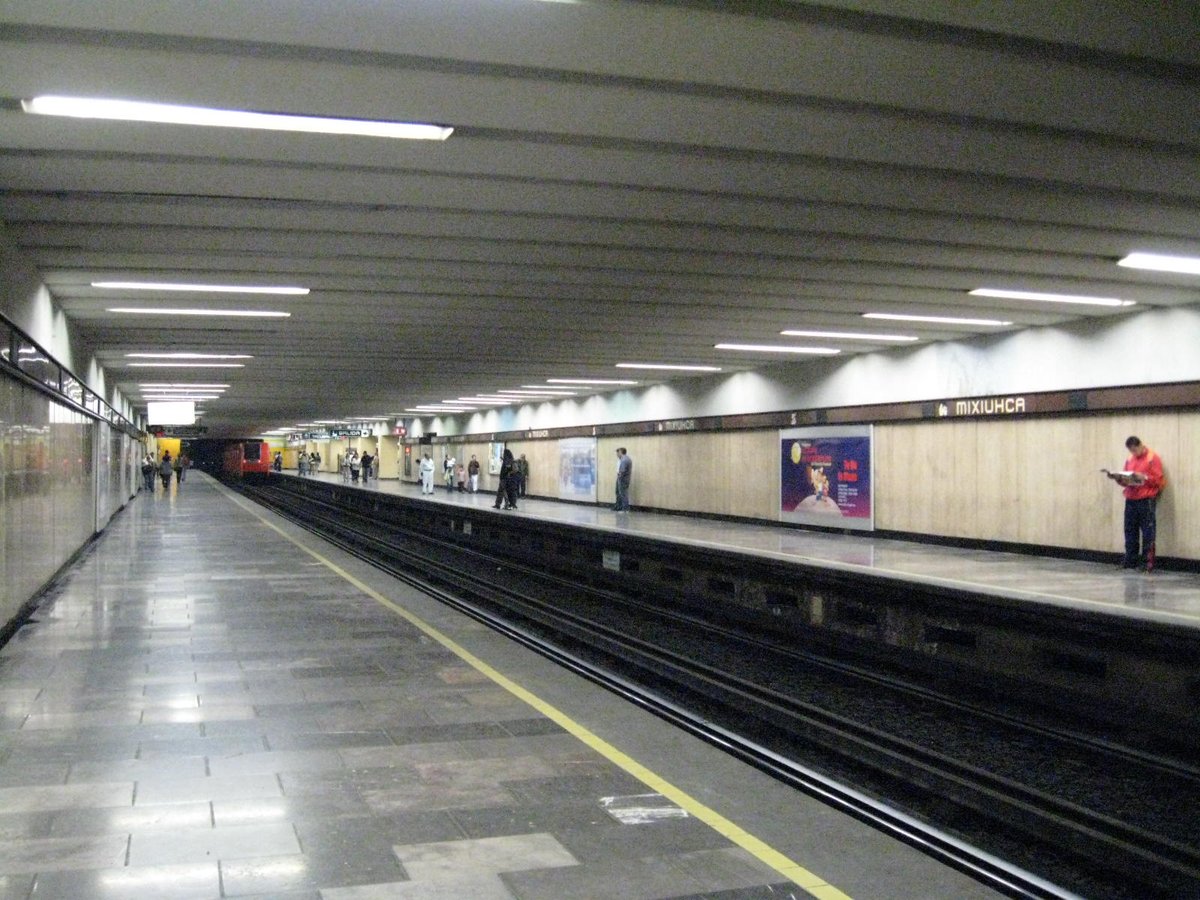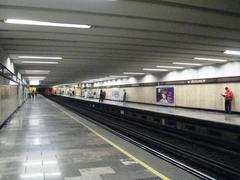
Mixiuhca: Visiting Hours, Tickets, and Historical Sites in Mexico City
Date: 15/06/2025
Introduction
Nestled in the eastern sector of Mexico City, Mixiuhca is a neighborhood steeped in rich history and vibrant cultural heritage. Its name, derived from the Nahuatl language meaning “place of births” or “where people are born,” is woven into the Mexica (Aztec) migration legend and echoes the area’s deep indigenous roots. Today, Mixiuhca offers visitors a compelling alternative to the city’s more frequented historical sites, presenting a living tapestry of pre-Hispanic, colonial, and contemporary urban life (mexicohistorico.com; MexicoCity.cdmx.gob.mx).
This comprehensive guide covers everything you need to know about visiting Mixiuhca: historical background, visiting hours, ticketing, guided tours, accessibility, safety tips, and insights into its main attractions, markets, and cultural events. Whether you’re a history enthusiast or a casual traveler, Mixiuhca’s unique character and layered narrative make it a must-visit destination in Mexico City (lonelyplanet.com; mexicotravelsecrets.com).
Table of Contents
- Historical Background and Cultural Significance
- Visiting Mixiuhca: Hours, Tickets & Accessibility
- Main Attractions and Experiences
- Getting There: Transportation
- Safety Tips
- Practical Information
- Frequently Asked Questions (FAQ)
- Conclusion and Recommendations
- References
Historical Background and Cultural Significance
Pre-Hispanic Roots
Mixiuhca’s origins trace back to the Mexica migration through the Valley of Mexico. According to legend, during the tribe’s journey from Aztlán to the eventual founding of Tenochtitlán, several children were born at the site, bestowing its Nahuatl name “place of births.” Originally consisting of small islands and chinampas (man-made agricultural islets), Mixiuhca was a fertile area supporting Nahua-speaking peoples (mexicohistorico.com).
Colonial and Modern Transformations
After the Spanish conquest, Mixiuhca was reshaped by colonial urban planning and religious institutions. The construction of roads and canals integrated the area into the growing city. Through the 19th and 20th centuries, Mixiuhca evolved from a key transit point to a densely populated residential hub, marked by vibrant markets, colorful murals, and annual festivals blending indigenous and Catholic traditions (mexiquinn.com; worldhistoryedu.com).
Cultural Identity and Community Life
Mixiuhca’s legacy is celebrated in local rituals, patron saint festivals, and street art depicting its storied past. The area is emblematic of Mexico City’s broader heritage—an ever-evolving urban mosaic that honors its indigenous roots while embracing modernity (MexicoCity.cdmx.gob.mx; howsafeismexico.com).
Visiting Mixiuhca: Hours, Tickets & Accessibility
Visiting Hours
- Neighborhood & Markets: Public spaces and markets in Mixiuhca are open daily, typically from 7:00 AM to 6:00 PM.
- Magdalena Mixhuca Sports City: Open daily from 6:00 AM to 10:00 PM; specific venues within may have different schedules depending on events (Wikipedia).
Tickets and Entry Fees
- Neighborhood & Public Markets: No entrance fee; Mixiuhca is a public, open-access area.
- Sports Complex & Events: General park entry is free. Tickets are required for major events at venues like the Autódromo Hermanos Rodríguez or Palacio de los Deportes; prices and availability depend on the event (Wikipedia).
Guided Tours
- While there are no official Mixiuhca-only tours, some local operators include the area in broader cultural or historical walking tours. Booking a local guide can provide deeper insights into Mixiuhca’s heritage and festivals (mexicotravelsecrets.com).
Accessibility
- Metro Access: Mixiuhca is served by Metro Line 9 (Mixiuhca Station), with trains running from 5:00 AM to midnight (MexicoCity.cdmx.gob.mx).
- Mobility: Main attractions and markets are pedestrian-friendly, though sidewalks can be uneven. Sports city facilities are generally wheelchair accessible, but some older buildings and markets may have limited access.
Main Attractions and Experiences
Magdalena Mixhuca Sports City (Ciudad Deportiva Magdalena Mixhuca)
A legacy of the 1968 Olympics, this vast park is home to:
- Autódromo Hermanos Rodríguez: Formula 1 Mexican Grand Prix venue.
- Palacio de los Deportes: Arena for concerts and sports.
- Velodrome, Aquatic Center, and Green Spaces: Facilities for public recreation, jogging, and cycling (Wikipedia).
Local Markets
- Mercado Mixiuhca: Offers a vibrant selection of traditional Mexican foods, fresh produce, and artisan crafts. Best visited in the morning for the full culinary experience.
Historic Churches and Community Spaces
- Several colonial-era churches serve as focal points for local festivals and processions, reflecting the area’s syncretic traditions.
Street Art
- Murals and graffiti throughout Mixiuhca depict indigenous heritage and contemporary social themes (nationalgeographic.com).
Cultural Festivals
- Annual fiestas patronales and Day of the Dead celebrations blend indigenous and Catholic customs, featuring music, dance, and communal gatherings (factnight.com).
Getting There: Transportation
- Metro: Line 9 (Mixiuhca Station) is the fastest and most affordable option.
- Buses & Microbuses: Several routes connect Mixiuhca to other city sectors.
- Ride-Hailing: Uber, Didi, and authorized taxis are widely available. Use official taxi stands (sitios) or apps for safety (Anna Everywhere).
- From Airport: Take Metro Line 5 to Pantitlán, transfer to Line 9 (Mexico City Metro Guide).
Safety Tips
- Visit primarily during daylight hours.
- Keep valuables secure—petty theft can occur in crowded areas (The Broke Backpacker).
- Use authorized transportation, especially after dark (Vite Presenta).
- In case of emergency, dial 911 for immediate assistance.
Practical Information
- Currency: Mexican Peso (MXN). ATMs available in banks and shopping centers.
- Language: Spanish predominates; basic English spoken in tourist areas.
- Weather: Mild year-round; March–May and October–November are most pleasant. Dress in layers and bring rain gear during the rainy season (Travellers Worldwide).
- Health: Drink only bottled water. Most eateries use purified water for food and ice, but exercise caution with street food if you have a sensitive stomach (Anna Everywhere).
- Connectivity: Wi-Fi in hotels and cafes; local SIM cards available for mobile data.
- Etiquette: Greet shopkeepers, tip restaurant staff (10–15%), and ask before photographing people or inside churches.
Frequently Asked Questions (FAQ)
Q: What are Mixiuhca’s visiting hours?
A: Public markets and neighborhood sites are open from 7:00 AM–6:00 PM. Magdalena Mixhuca Sports City opens from 6:00 AM–10:00 PM, with specific venues following event schedules.
Q: Are tickets required?
A: No tickets are needed to enter Mixiuhca or its markets. Special events at sports facilities require tickets, available online or at authorized vendors.
Q: Is the area accessible by public transportation?
A: Yes. Metro Line 9 (Mixiuhca Station) is the most direct route.
Q: Is Mixiuhca safe for tourists?
A: Yes, especially during the day. Practice standard safety precautions, use authorized taxis or ride-hailing apps, and avoid isolated areas after dark.
Q: What local foods should I try?
A: Tacos, tamales, tlacoyos, quesadillas, and aguas frescas are local favorites, best sampled at Mercado Mixiuhca (Dream Big Travel Far Blog).
Conclusion and Recommendations
Mixiuhca stands as a vibrant testament to Mexico City’s layered past and dynamic present. Open to all and rich in tradition, it invites you to delve into local markets, witness colorful festivals, and explore both history and modern life side by side. Its accessibility, absence of entrance fees for most attractions, and close proximity to major sites like the Magdalena Mixhuca Sports City make it ideal for travelers seeking authenticity and insight into the city’s cultural fabric.
For the best experience, plan your visit around local festivals or major sporting events, explore on foot or with a local guide, and embrace the neighborhood’s friendly atmosphere and culinary delights. Stay updated on schedules and events with official tourism websites or apps like Audiala, and remember to practice responsible tourism by supporting local businesses and respecting community traditions.
References
- Mixiuhca Historical Neighborhood in Mexico City: Visiting Hours, Tickets & Travel Tips
- The Cultural Significance of Mixiuhca: Visiting Hours, Tickets & Mexico City Historical Sites Guide
- Magdalena Mixhuca Sports City
- Mexico City Overview - Britannica
- Mexico City Travel Tips - Mexico Travel Secrets
- Best Neighborhoods in Mexico City - Lonely Planet
- Mexico City Metro Guide - Anna Everywhere
- Is Mexico City Safe? - The Broke Backpacker
- Things to Do in Mexico City - Dream Big Travel Far Blog
- Mexico City: Best Time to Visit - Travellers Worldwide
- Is Mexico City Safe for Americans? - Vite Presenta
For official updates, visit Mexico City Tourism and Mixiuhca Metro Station.











































































































































































